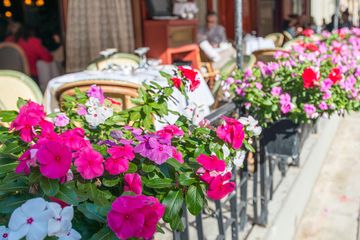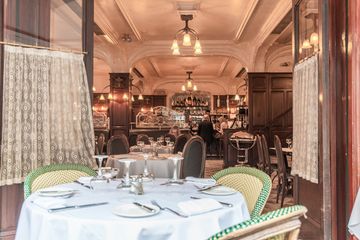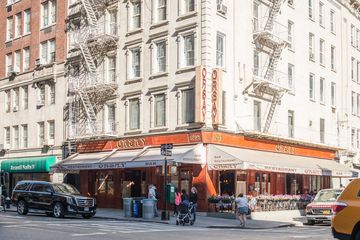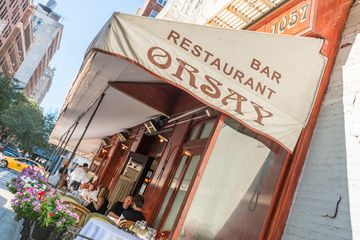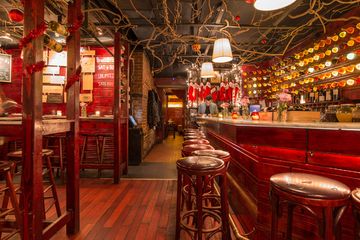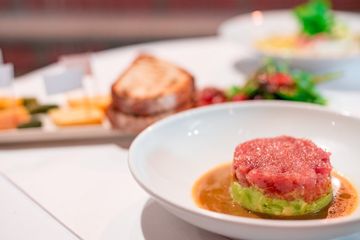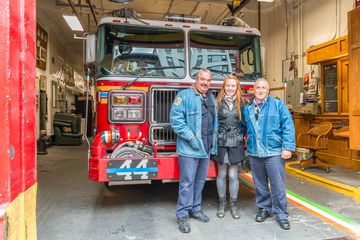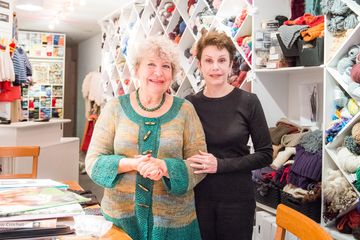Remy, the Belgian gentleman behind the bar, described his time at B Cafe as a remarkable experience. He came to the States and was having a difficult time finding a job, but two days before his visa was to run out in 2006, he happened upon Shkel, who had recently opened a restaurant on East 75th Street. Apparently, the two men hit it off, and Shkel decided to sponsor Remy. Over the past nine years, Remy has been able to watch "this little restaurant grow up. " Having arrived on the scene only six weeks after its opening, he appreciated working for a company where he could "find the consequences" of his involvement. Remy went on to say that he became a member of a team that has had very little turnover. Remy continued, "Customers feel the consistency. " Being on a side street, they must work that much harder to keep their guests coming back. He acknowledged that everything good takes time, but that at this point, he feels that B Cafe has earned the approval of its neighbors. Dropping in on a Thursday evening around 7: 00pm, I can attest to the fact that this is a popular spot on the Upper East Side. We were the fortunate ones who got to sit at the one lovely table out front on a perfect fall night, thus being able to witness the constant flow of enthusiastic diners. Luana, also from Belgium, has worked in the cafe for several years and encouraged me to speak to Remy about the beers that they serve, promising me I would not be disappointed. As the bar filled up, Remy pulled down a laminated map from the ceiling. Picking up a lengthy pointer, this very clever man began my school lesson on Belgian beers from around the region. As he pointed to each district, he explained how the beer was made while also giving me both a history and geography education on Belgium and its surrounding countries. When I commented on how extraordinary this concept of the map was, Remy replied with a straight face, "I have been teaching here for almost ten years. " I then had to know how this map idea came to be. When the restaurant first opened, Remy found that he was always drawing Belgium on a cocktail napkin in an effort to explain interesting facts about the country to those seated in front of him. One day, he told me, "The boss asked why I was always using up so many napkins and when I explained, he thought it would be better if we just had a map. " Absolutely brilliant. Settling down at my outdoor table, dish after dish was presented to Manhattan Sideways' photographer Tom to photograph and then for us to eat. The Belgian cheese platter came with clever little flags on toothpicks that described what we were sampling. I took a special liking to Saint-Bernard, "produced in the heart of West Flanders, " and Brugge Jong, a "mild, smooth cheese. " The Belgian endive salad was served with Stilton and an aged balsamic dressing, while the tuna tartare sat atop a mound of mashed avocado. Piping hot Moules Frites arrived and as the top was lifted, the steam poured out from a vast pot of mussels. Carbonnade Flamande, similar to a beef bourguignon but cooked for six to eight hours in an aged dark beer, was the favorite of the night for my husband, who joined us. After the Carbonnade Flamande and two Belgian beers (Palm and Tripel Karmeliet), he expressed how he wished that he could spend more time with the Manhattan Sideways team. Just when he thought the fun was over, Luana appeared with their classic dessert: The Belgian waffles were served with a dollop of Speculoos (a ginger biscuit spread) and three traditional sauces - raspberry beer, chocolate and strawberry - the colors of Belgium's flag. Before leaving, I took a quick peek at the garden in the back, which provides outdoor seating throughout the summer and is enclosed during the colder months. Be it sitting cozily outside at the romantic table upfront, at any of the tables inside, or in the quiet garden, the experience is nothing short of exceptional. Not only is the food superb, but combined with the captivating staff, it makes for the perfect night out.
